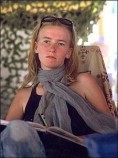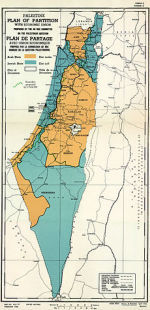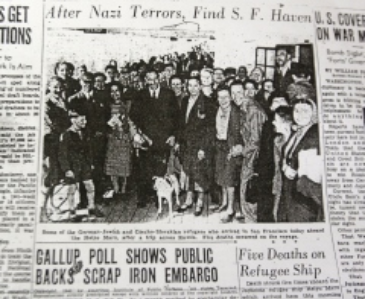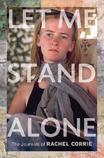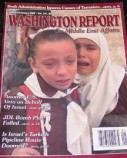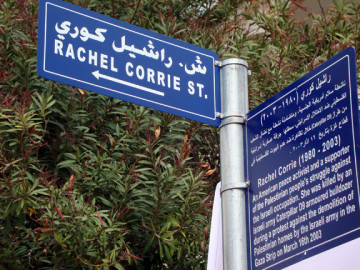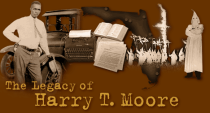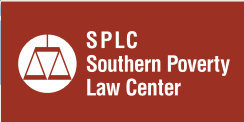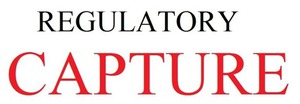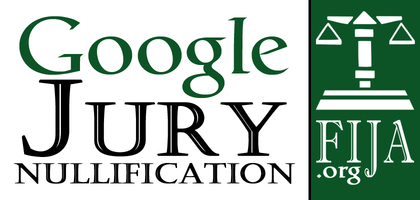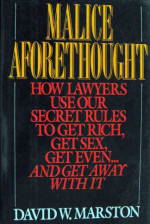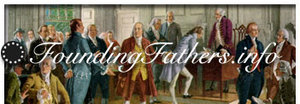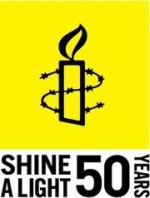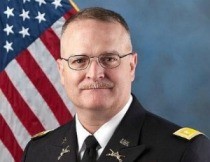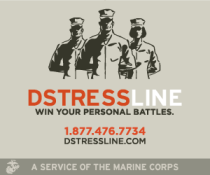Rachel Corrie (1979 - 2003) American Peace Activist
"Experience the world as a dynamic and a
changeable, interactive thing." - Rachel Corrie
The story of Rachel Corrie
Rachel Corrie, a 23 year-old American Peace Activist, was killed in Gaza Palestine trying to stop an American-supplied IDF militarized D9 Caterpillar bulldozer from demolishing a home. Rachel famously said she could wash dishes to help the cause of the people of Palestine. Rachel Corrie was a student at The Evergreen State College at the time of her death.
Rachel Corrie
Wikipedia
Rachel Aliene Corrie (April 10, 1979 – March 16, 2003) was an American peace activist and diarist.[1][2] She was killed by an Israel Defense Forces (IDF) armored bulldozer in a combat zone in Rafah, in the southern part of the Gaza Strip, under contested circumstances[2][3] during the height of the second Palestinian intifada.[4]
She had come to Gaza as part of her senior-year college assignment to connect her home town with Rafah in a sister cities project.[5] While there, she had engaged with other International Solidarity Movement (ISM) activists in efforts to prevent the Israeli army's demolition of Palestinian houses.[2][6][7]
Less than two months after her arrival,[5] on March 16, 2003, Corrie was killed during an Israeli military operation after a three-hour confrontation between Israeli soldiers operating two bulldozers and eight ISM activists.[3][8]
The exact nature of her death and the culpability of the bulldozer operator are disputed, with fellow ISM protestors saying that the Israeli soldier operating the bulldozer deliberately ran over Corrie, and Israeli eyewitnesses saying that it was an accident since the bulldozer operator could not see her.[9][10][11][12]
In 2005 Corrie's parents filed a civil lawsuit against the state of Israel. The lawsuit charged Israel with not conducting a full and credible investigation into the case and with responsibility for her death,[13] contending that she had either been intentionally killed or that the soldiers had acted with reckless neglect.[3] They sued for a symbolic one US dollar in damages.
In August 2012, an Israeli court rejected their suit[3] and upheld the results of the 2003 military investigation, ruling that the Israeli government was not responsible for Corrie's death. The ruling was met with some criticism.[14][15][16]
An appeal against the August 2012 ruling was heard on May 21, 2014. On February 14, 2015, Israel's supreme court rejected the appeal.[17]. Read more
In March 2003, U.S. Representative Brian Baird introduced a resolution in the U.S. Congress calling on the U.S. government to "undertake a full, fair, and expeditious investigation" into Corrie's death. The House of Representatives took no action on the resolution.[50] The Corrie family joined Representative Baird in calling for a U.S. investigation.
In August 2012, U.S. Ambassador to Israel Dan Shapiro stated that the Israeli investigation was not satisfactory, and was not as thorough, credible or transparent as it should have been. Shapiro said further that the government of the United States is unsatisfied with the IDF's closure of its official investigation into Corrie's death.[16] Read more
The United Nations Partition Plan for Palestine
United Nations Partition Plan for Palestine Wikipedia
The United Nations Partition Plan for Palestine was a proposal developed by the United Nations, which recommended a partition with Economic Union of Mandatory Palestine to follow the termination of the British Mandate. On 29 November 1947, the U.N. General Assembly adopted a resolution recommending the adoption and implementation of the Plan as Resolution 181(II).[2]
The resolution recommended the creation of independent Arab and Jewish States and the Special International Regime for the City of Jerusalem. The Partition Plan, a
four-part document attached to the resolution, provided for the termination of the Mandate, the progressive withdrawal of British armed forces and the delineation of boundaries between the two States
and Jerusalem. Part I of the Plan stipulated that the Mandate would be terminated as soon as possible and the United Kingdom would withdraw no later than 1 August 1948. The new states would come into
existence two months after the withdrawal, but no later than 1 October 1948. The Plan sought to address the conflicting objectives and claims of two competing movements: Arab nationalism in Palestine and Jewish
nationalism, known as Zionism.[3][4] The Plan also called for Economic Union between the proposed states, and for the
protection of religious and minority rights.
The Plan was accepted by the Jewish public, except for its fringes, and by the Jewish
Agency despite its perceived limitations.[5][6]
With a few exceptions, the Arab leaders and governments rejected the plan of partition in the resolution[7] and indicated an unwillingness to accept any form of
territorial division.[8] Their reason was that it violated the principles of national self-determination in the UN charter which granted people the right to decide their own destiny.[6][9]
Immediately after adoption of the Resolution by the General Assembly, the civil war broke out.[10] The partition plan was not implemented.[11] Read
more
_________________________________________________
UN Resolution 181 (II) Future government of Palestine
- Resolutions Adopted by the General Assembly During its Second Session
Resolution 181 (II) 29 November 1947, Future government of Palestine (Original Document)
- UN Special Committee on Palestine "majority proposal" (partition) formed the basis of res. 181.
- The UN Palestine Commission reported that it was unable to implement res. 181 due to the deteriorating security situation and was abolished on 14 May 1948:
_________________________________________________
UN Partition Plan - BBC News
Primer on Palestine, Israel and the Arab-Israeli Conflict
UN Resolution 181 - The Partition Plan Myths and Facts
Why the UN Partition Plan Wasn't Implemented
U.N. Partitions Palestine Allowing for Creation of Israel
1947 UN Partition Plan Israel Ministry of Foreign Affairs
The Partition Plan: Background & Overview
What Was the Outcome of the 1947 UN Partition Plan?
The Slattery Report - Plan to relocate Jews to Alaska
Slattery Report
Wikipedia
The Slattery Report, officially titled The Problem of Alaskan Development, was produced by the United States Department of the Interior under Secretary Harold L. Ickes in 1939–40. It was named after Undersecretary of the Interior Harry A. Slattery. The report, which dealt with Alaskan development through immigration, included a proposal to move European refugees, especially Jews from Nazi Germany and Austria, to four locations in Alaska, including Baranof Island and the Mat-Su Valley. Skagway, Petersburg and Seward were the only towns to endorse the proposal.
The report
In November 1938, two weeks after Kristallnacht, Ickes proposed the use of Alaska as a "haven for Jewish refugees from Germany and other areas in Europe where the Jews are subjected to oppressive restrictions." Resettlement in Alaska would allow the refugees to bypass normal immigration quotas, because Alaska was a territory and not a state. That summer Ickes had toured Alaska and met with local officials to discuss improving the local economy and bolstering security in a territory viewed as vulnerable to Japanese attack. Ickes thought European Jews might be the solution.[1][2]
In his proposal, Ickes pointed out that 200 families from the dustbowl had settled in Alaska's Matanuska Valley.[citation needed] The plan was introduced as a bill by Senator William King (Utah) and Democratic Representative Franck Havenner (California), both Democrats. The Alaska proposal won the support of theologian Paul Tillich, the Federal Council of Churches, and the American Friends Service Committee.
Response
The plan won little support from leaders of American Jewish people, with the exception of the Labor Zionists of America. Rabbi Stephen Wise, president of the American Jewish Congress, stated that adoption of the Alaska proposal would deliver "a wrong and hurtful impression ... that Jews are taking over some part of the country for settlement."[1]
Non-Jewish Americans also moved against the proposal, relying on anti-Jewish rhetoric and fear of the socialism that was commonly believed to be associated with European Jewish populations.[1][3]
The plan was dealt a severe blow when Franklin Roosevelt told Ickes that he insisted on limiting the number of refugees to 10,000 a year for five years, and with a further restriction that Jews not make up more than 10% of the refugees. Roosevelt never mentioned the Alaska proposal in public, and without his support the plan died.[1] Read more
Reaction to the Resettlement of World War II Refugees in Alaska
Gerald S. Berman, Jewish Social Studies, Indiana University Press
Vol. 44, No. 3/4 (Summer - Autumn, 1982), pp. 271-28
What Americans thought of Jewish refugees on the eve of World War II
What Americans thought of Jewish refugees on the eve of World
War II
By Ishaan Tharoor
The Washington Post
Published: November 17, 2015
WASHINGTON — A poll published in Fortune magazine in July 1938 showed fewer than 5 percent of Americans believed the United States should raise its immigration quotas or encourage political refugees fleeing the fascist states in Europe to voyage across the Atlantic. The vast majority of those refugees were Jewish. Two-thirds of the poll respondents agreed with the proposition that "we should try to keep them out," according to the poll, published on the Twitter account @HistOpinion.
To be sure, the United States was emerging from the Great Depression, hardly a climate in which ordinary folks welcome immigrants and economic competition. The events of Kristallnacht — a wave of anti-Jewish pogroms in areas controlled by the Nazis — had yet to take place. And the poll's use of the term "political refugees" could have conjured in the minds of the American public images of communists, anarchists and other perceived ideological threats.
But data also tweeted by @HistOpinion shows that two-thirds of Americans polled in January 1939 — well after the events of Kristallnacht — said they would not take in 10,000 German-Jewish refugee children.
Most Western countries regarded the plight of Jewish refugees with skepticism or unveiled bigotry (and sympathy only followed wider knowledge of the monstrous slaughters of the Holocaust), as WorldViews wrote earlier this year:
"No matter the alarming rhetoric of [Adolf] Hitler's fascist state — and the growing acts of violence against Jews and others — popular sentiment in Western Europe and the United States was largely indifferent to the plight of German Jews.
'Of all the groups in the 20th century,' write the authors of the 1999 book 'Refugees in the Age of Genocide,' 'refugees from Nazism are now widely and popularly perceived as "genuine," but at the time German, Austrian and Czechoslovakian Jews were treated with ambivalence and outright hostility as well as sympathy.' "
It's worth remembering this mood when thinking about the current moment, in which the United States is once more in the throes of a debate over letting in refugees. Ever since Friday's terror attacks in Paris, the Republicans, led by their presidential candidates, have sounded the alarm over the threat of jihadist infiltration from Syria — even though it now appears every single one of the identified assailants was a European national.
They have signaled their intent to stop Syrian refugee arrivals, or at least accept only non-Muslim Syrians.
Republican presidential candidate Chris Christie of New Jersey was one of the many governors who on Monday said they would oppose settling Syrian refugees in their states; Christie insisted that he would not even permit "3-year-old orphans" entry.
Today's 3-year-old Syrian orphan, it seems, is 1939's German-Jewish child.
Of course, there are huge historical and contextual differences between then and now. But as Washington Post columnist Dana Milbank notes, it's hard to ignore the echoes of the past when faced with the "xenophobic bidding war" of the present:
"This growing cry to turn away people fleeing for their lives brings to mind the SS St. Louis, the ship of Jewish refugees turned away from Florida in 1939," writes Milbank. "It's perhaps the ugliest moment in a primary fight that has been sullied by bigotry from the start. It's no exaggeration to call this un-American." Read more
The Washington Post Published: November 17, 2015
What Americans thought of Jewish refugee[...]
Adobe Acrobat document [77.0 KB]
 U.S. Interior Secretary Harold L. Ickes and Jane Dahlman Ickes in Mount McKinley National Park (later Denali National Park and Preserve), Alaska. 1938. Anchorage Museum at Rasmuson Center, Ickes Collection.
U.S. Interior Secretary Harold L. Ickes and Jane Dahlman Ickes in Mount McKinley National Park (later Denali National Park and Preserve), Alaska. 1938. Anchorage Museum at Rasmuson Center, Ickes Collection.
Why did Alaska deny asylum to Jewish refugees during WWII?
Green & Gold News
University of Alaska Anchorage
April 30, 2014
Associate Professor Bill Myers threw out an idea for his senior seminar history majors last year. Did anyone want to dive in and take a look at Alaska’s WWII history, in particular the territory’s refusal to grant asylum to Jewish refugees? It’s one element of U.S. history that hasn’t seen a lot of scholarship. Jordan Norquist, a senior double-majoring in history and German and minoring in psychology, was up for the challenge. Bonus: she could read primary source documents in both English and German. Her final paper, "Charity Begins at Home: How Public Opinion Denied Jewish Refugees Asylum in Alaska," was selected for feature in this year’s Student Showcase. Her research also made her eligible for the Patricia James Memorial Scholarship, which she applied for and won. Read more
Ruth Webber was 21 when she left Europe in 1941 to join Yule Kilcher in Alaska, a Swiss immigrant. She later became matriarch of a musical family that includes the pop star Jewel. The following is from Jewel's website:
Ruth was an aspiring opera singer who left pre-war Germany, got on a ship headed to Alaska to marry a man she hardly knew because she felt her future children must be born somewhere free.
She married Yule Kilcher, who was a young idealist who hiked across the Alaskan glaciers by foot, with a ladder on his back, which he used to bridge crevasses in the ice so he could walk over them. He was looking for adventure and new land, away from the Nazi movement. Alaska was still not a state in the late 40's, so he was given (as all takers were) 600 acres of land for free if he promised to homestead it. He sent word back to his homeland of Switzerland, where many friends expressed wanting to move, that he had found a good piece of land. But none came, except Ruth.
Cynthia Corrie v Caterpillar Inc. 05-362[...]
Adobe Acrobat document [44.5 KB]
Corrie et al. v. Caterpillar
Corrie v. Caterpillar is a federal lawsuit filed against Illinois-based Caterpillar, Inc. on behalf of the parents of Rachel Corrie, the 23-year-old American peace activist and student who was run over and killed by a Caterpillar bulldozer in Palestine on March 16, 2003, and on behalf of Palestinian families whose family members were killed or injured when bulldozers demolished their homes on top of them.
On September 17, 2007, the Ninth Circuit Court of Appeals affirmed the dismissal of CCR’s case charging Caterpillar, Inc. The decision from a three-judge panel found that the Court did not have jurisdiction to decide the case because adjudication would intrude upon the political branches’ foreign policy decisions. Plaintiffs filed a petition for panel rehearing or rehearing en banc on October 9, 2007. Plaintiffs’ petition was denied on January 12, 2009.
The case that Rachel Corrie’s parents brought against Israel in March 2005 began trial in the Haifa District Court in Israel on March 10, 2010. The district court issued its verdict in August 2012, finding Israel not responsible for Rachel's death. The Israel Supreme Court is hearing the appeal on May 21, 2014. Follow the trial at the Rachel Corrie Foundation website:
rachelcorriefoundation.org. A statement by human rights organization calling for accountability in Rachel's case. To take action and demand justice and accountability for Gaza and throughout Palestine/Israel CCR's Rachel Corrie Day of Action
CCR attorney Katherine Gallagher attended the Corrie trial in Haifa in October 2010, when the bulldozer driver who killed Rachel testified. Her blogs on the trial are available here and here, and here is her blog on the appeal. read more
On February 14, 2015, Israel's supreme court rejected the appeal.
Exclusive interview with Rachel Corrie's parents on Israel Social TV
Rachel Corrie's family loses wrongful death appeal in Israel's supreme
court
The Guardian
By Peter Beaumont in Jerusalem
12 February 2015
Family of US woman killed in Gaza 12 years ago had sought to hold Israel liable for her death, but judges uphold decision of lower court in Haifa
Israel’s supreme court has rejected the appeal by the family of Rachel Corrie – the US activist who was crushed to death by a military bulldozer in Gaza 12 years ago – which had sought to hold Israel liable for her death.
The ruling, which followed a high-profile hearing before Israel’s top court last year, appears to bring to an end – in the Israeli courts at least – years of effort by Corrie’s family to hold the country’s military responsible for her death. read more
Photostory: Israeli bulldozer driver murders American peace
activist
The Electronic Intifada
By Nigel Parry and
Arjan El Fassed
16 March 2003
On 16 March 2003 in Rafah, occupied Gaza, 23-year-old American peace activist Rachel Corrie from Olympia, Washington, was murdered by an Israeli bulldozer driver. Rachel was in Gaza opposing the bulldozing of a Palestinian home as a volunteer with the International Solidarity Movement.
Rachel and seven other ISM activists were in the Hi Es Salam area of Rafah, Gaza, trying to prevent the razing of Palestinian land and property. Present were two Israeli occupation army bulldozers and a tank. For a period of two hours, the activists played ‘cat and mouse’, attempting to prevent the illegal demolitions by physically blocking the passage of the two bulldozers. read more
Also see, Rachel Corrie's murder and Israeli "justice"
Rachel Corrie (right) with her Palestinian host family
The Rachel Corrie Foundation for Peace and Justice
Rachel Corrie was killed in the Gaza Strip in Palestine on March 16, 2003, trying to prevent the demolition of the home of a Palestinian family (a pharmacist, accountant,
their wives, and five young children). The Rachel Corrie Foundation for Peace and Justice was established by members of Rachel’s family and community to continue the kind of work that she began and
hoped to accomplish. Read more
Let Me Stand Alone:
Rachel Corrie, Author
From Publishers Weekly: In 2003, while attempting to block the demolition of a Palestinian family's home in the Gaza Strip, 23-year-old American Rachel Corrie was killed by an armored Caterpillar D-9
bulldozer operated by a member of the Israel Defense Forces. This collection of her journal entries opens a window on the maturation of a young woman seeking to make the world a better place through
social activism. The essays, poetry and drawings reveal Corrie going through the routine pangs of growing up, the development of her social consciousness and her love of language. Two events
broadened Corrie's perspective beyond her childhood home of Olympia, Wash. A 1995 student exchange trip to Russia and the repercussions of 9/11 were formative events accelerating her desire to help
those she felt were harmed by U. S foreign policy. Following Corrie's death, the British newspaper the Guardian published her e-mail accounts of what she'd witnessed in Gaza. This collection of
essays, while uneven, contains thought-provoking ideas. Read more
Rachel, A film by Simone Bitton
Women Make Movies
Films by and about Women
France/Belgium, 2009, 100 minutes, Color, DVD, French, Hebrew, Arabic, English subtitles
RACHEL is a startlingly rigorous, fascinating and deeply moving investigatory documentary that examines the death of peace activist and International Solidarity Movement (ISM) member Rachel Corrie,
who was crushed by an Israeli army bulldozer in the Gaza Strip in 2003. A few weeks after her little-reported death, an inquiry by Israeli military police concluded that Corrie died in an accident.
Simone Bitton (WALL), an award-winning documentary filmmaker who is a citizen of both France and Israel, has crafted a dispassionate but devastating essay investigating the circumstances of Rachel
Corrie’s death—including astounding eyewitness testimony from activists, soldiers, Israeli Defense Force army spokespersons and physicians, as well as insights from Corrie’s parents, mentors and
diaries. Read more here
In assembling a thorough and candid account of the event, using both visual and narrative evidence, Bitton’s quietly persistent questioning manages to accomplish what the inadequate legal proceedings
and the overheated press coverage did not: an unflinching examination that refuses to exculpate or equivocate. By aligning her filmmaking methodology with the ISM’s guidelines to state only objective
and concrete details without placing judgment, Bitton examines the circumstances surrounding the unresolved case of Corrie's death. The film begins like a classic documentary, but soon develops,
transcending its subject and establishing a candid new visual approach for bearing witness. With understated cinematic techniques, Bitton captures the spirit of Rachel's youth, idealism, and
political commitment amidst sweeping landscapes of Gaza and a portrait of daily life under ever-present military aggression. Read more
Rachel, A film by Simone Bitton, 2009, 100 minutes, Color, DVD, France/Belgium, French, Hebrew, Arabic, English subtitles. Courtesy of Women Make Movies.
What’s wrong with Caterpillar? TESC Divest
Although it’s easy to associate Caterpillar (CAT) with bright yellow construction equipment operated by Bob the Builder and his shiny yellow hard
hat, this is not what we are calling into account. The Caterpillar Corporation that we’re calling out is the corporation that sells military goods used to perpetuate human rights abuses and war
crimes. Caterpillar D9 and D10 bulldozers are manufactured to military specifications and sold to
Israel through the Foreign Military Financing program, which oversees US military sales to Israel. These sales are actually purchased through US taxpayer money and given to Israel. read more
TESC Divest
What is divestment? Divestment is taking social responsibility for one’s financial investments. When we invest money in corporations that engage in or profit from human
rights abuses, unethical labor practices, and environmental destruction, we are both enabling and supporting those crimes. As stakeholders, we are complicit.
By dis-investing, or divesting, from such companies, we take a stance against unethical practices. We send a message to lawbreakers and human rights abusers that their unethical practices will not be
tolerated and will not be supported. Divestment punishes unethical corporate profiteering and forces corporations to become more accountable for their actions. more
News Stories - Rachel Corrie
- Fact sheet: The killing of Rachel Corrie: Ten years later
- If Americans Knew, Rachel Corrie
- Rachel Corrie, Metapedia
- Was This House Worth Her Life?
- The Death of Rachel Corrie, Mother Jones
- She was a girl from small-town America, The Guardian
- Rachel Corrie in Palestine…and in San Francisco
- We all remember Rachel Corrie, except for the driver...
- 12 Years After Killing Rachel Corrie, Israel Continues
- Israeli soldiers making Rachel Corrie pancakes
- Play about Rachel Corrie opens in Jerusalem
- Activists Commemorating Rachel Corrie’s Death Attacked
THEATER REVIEW | 'MY NAME IS RACHEL CORRIE'
Notes From a Young Idealist in a World Gone Awry
The New York Times
By BEN BRANTLEY
Published: October 16, 2006
Few plays have traveled to New York with as much excess baggage as "My Name Is Rachel Corrie," which opened last night at the Minetta Lane Theater. This small, intense one-woman drama, first staged last year at the Royal Court Theater in London, makes its delayed American debut freighted with months of angry public argument, condemnation, celebration and prejudgment: all the heavy threads that make up the mantle of a cause célèbre.
So how does it stand on its own, this quiet, 90-minute work that has been preceded by so much noise? read more
My Name Is Rachel Corrie
Wikipedia
My Name is Rachel Corrie is a play based on the diaries and emails of Rachel Corrie, edited by Alan Rickman, who directed it, and
journalist Katharine Viner. Rachel Aliene Corrie (April 10, 1979 – March 16, 2003) was an American Evergreen State College student and member of the International Solidarity Movement (ISM) who traveled to the Gaza Strip during the Second Intifada. She was killed by a Caterpillar D9R
armored bulldozer operated by the Israel
Defense Forces (IDF) while protesting against the destruction of a house by the IDF in the Gaza Strip, apparently acting as a human shield. The details of the events surrounding Corrie's death,
as she stood between an Israeli bulldozer and a Palestinian home, which allegedly contained a tunnel used for smuggling weapons from Egypt, are disputed. While an Israeli military investigation ruled the death to be an accident, the ISM maintains that Corrie was run over deliberately. In 2012 The Haifa District Court
ruled in a lawsuit filed by Corrie's parents that her death was an accident, and rejected the claim that Israel was at fault over the death. read more
MV Rachel Corrie
Wikipedia
MV Rachel Corrie is a 499 GT coaster owned and operated by the Free Gaza Movement. The ship is named in honour of Rachel
Corrie, a former member of the International Solidarity Movement. It was originally called Carsten,
it has also carried the names Norasia Attika, Manya and more recently Linda.
In June 2010 the vessel was intercepted by Israeli Defence Forces while attempting to break the Israeli blockade of the Gaza Strip and to deliver humanitarian aid. read more
Washington Report On Middle Eastern Affairs
The Washington Report on Middle East Affairs is a 100-page magazine published 9 times per year in Washington, DC, that focuses on news and analysis from and about the
Middle East and U.S. policy in that region.
The Washington Report is published by the American Educational Trust (AET), a non-profit foundation incorporated in Washington, DC by retired U.S. foreign service
officers to provide the American public with balanced and accurate information concerning U.S. relations with Middle Eastern states.
AET's Foreign Policy Committee has included former U.S. ambassadors, government officials, and members of Congress, including the late Democratic Senator J. William
Fulbright, and Republican Senator Charles Percy, both former chairmen of the Senate Foreign Relations Committee. Members of AET's Board of Directors and advisory committees receive no fees for their
services. read more
The Mideast in the Midwest
Washington Report on Middle East Affairs, December 2004, pages 38-39
by Betsy Mayfield
Rachel Corrie’s Iowa Family Seeks "Thorough, Credible" Investigation Into Her Death
HEARING ABOUT Rachel Corrie, bulldozed to death on March 16, 2003 by an Israeli military conscript, I was horrified and saddened—just as I’d been on hearing about other
deaths in Gaza, the West Bank or Israel. Rachel’s story kept me awake nights. Some friends of Israel haven’t wanted Americans to hear about her death, however. "Just say, "Every life is equally
precious.’ That’s enough!" they’d tell me.
Although Rachel Corrie was from Olympia, Washington, her aunts and uncles live in Iowa. The Iowa Brodersen family includes three sisters and one brother of Rachel’s
mother, Rachel’s grandmother, plus extended family members. Since Rachel was killed, I have marveled watching them seek answers in what has been, for this farm family, a solemn one-step-at-a-time
experience. Explained Cheryl Brodersen, Rachel’s aunt, "We’re on this quest because we believe that it is in our family’s, America’s and Israel’s interest to seek truth and justice. We believe in
focusing on facts rather than innuendo, half-truths or untruths. We seek definition. What is a "thorough, credible, transparent’ investigation? Will the United States government accept anything
less?" read more
Washington Report On Middle Eastern Affairs, Wikipedia
The Washington Report on Middle East Affairs (also known as The Washington Report and WRMEA) magazine,
published eight times per year, focuses on "news and analysis from and about the Middle East and U.S. policy in that region".[2] The New York Times has characterized it as "critical of United States policies in the Middle East".[3] In 2005, USA Today called it "a non-partisan publication that has been critical of Bush's policies".[4] Representatives of pro-Israel organizations have criticized the Washington Report on Middle
East Affairs as being aligned with the Arab lobby and as "anti-Israel". read more
THIRD WORLD TRAVELER is an archive of articles and book excerpts that seek to tell the truth
about American democracy, media, and foreign policy, and about the impact of the actions of the United States government, transnational corporations, global trade and financial institutions, and the
corporate media, on democracy, social and economic justice, human rights, and war and peace, in the Third World, and in the developed world.
THIRD WORLD TRAVELER also provides information and links to aid international travelers.


